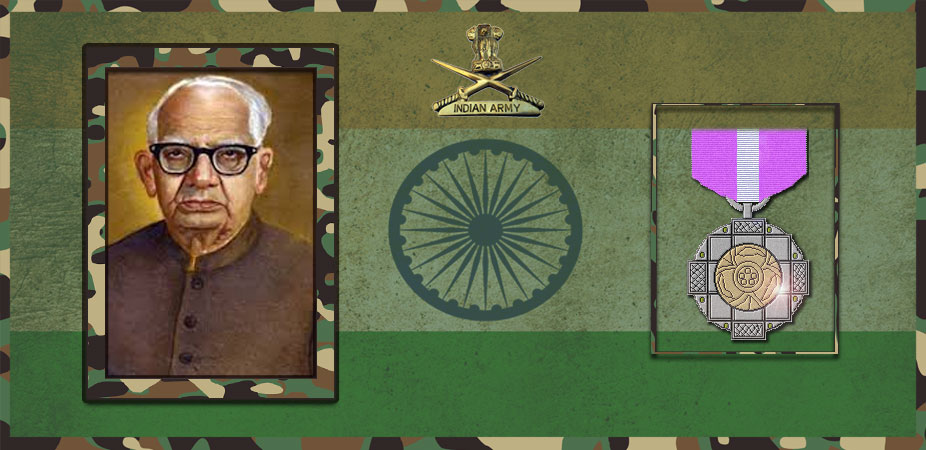Let's salute to our Indian Army together, We are proud to be Indian.
Let's salute to our Indian Army together, We are proud to be Indian.

Niaz Fatehpuri (1884–1966) was the nom de plume of Niyaz Muhammed Khan, an Urdu poet, writer, and polemicist. He was also the founder and editor of Nigar, which he turned into one of the most prestigious Urdu literary journals in the Indian subcontinent. In 1962, he was awarded the Padma Bhushan by the President of India for “Literature and Education.”
Niaz Fatehpuri was born in 1882 at Haswa, Fatehpur District, in what is now Uttar Pradesh during the British Raj. He died in 1966 in Karachi, Pakistan. Niaz Fatehpuri’s real name was Mawlānā Niyaz Muhammad Khan. He was educated at Madrasa Islamia in Fatehpur, Madrasa Alia in Rampur, and Darul Uloom Nadwatul Ulama in Lucknow. He resigned his post in 1902 as a Police Sub-Inspector after working in this capacity for a couple of years. Thereafter, he worked in different posts until 1921, when he started editing and publishing his famous monthly journal, Nigar, which served as a mirror to the literary scene in Uttar Pradesh till his migration to Pakistan in the early sixties.
His fiction consists of seven collections, besides many short stories published in the Nigar. Although at a later stage he wrote a few stories attacking religious hypocrisy and fanaticism and there is evidence to show how his desire grew to reform the society through short stories, his literary romanticism was too frank to permit him to tread the paths of reality freely.
His important publications are:
Since the publication of his first story, “Ek Parsi Dosheeza ko Dekh Kar” (“Having Seen a Parsi Girl”) in 1910, most of his stories have revealed an imaginative preoccupation with things unworldly. Such writings can perhaps be regarded more as pieces of poetic prose than short stories which are normally pregnant with happenings. Whenever he chooses to bring in events, as in “Cupid aur Psyche” (“Cupid and Psyche”), abstract ideas make their sneaky appearance and overcrowd the events, with the result that they are prevented from proceeding further.
By the early forties, Niaz Fatehpuri had already switched over to philosophy and criticism, for the true features of the short story having been identified with those of Premchand by now, he could not but feel the futility of his wanderings in imaginative wilderness.
He was the editor of the famous Urdu literary magazine Nigar, some of whose issues are considered permanent additions to the Urdu literature; later, was interested in Islamic history, especially the literary and political aspects of it. He was awarded Padma Bhushan for his services to Urdu in 1962.
Niaz Fatehpuri was a fiction-writer of repute, whose Urdu short-stories, which are poems in prose, are considered to be on a par with those of Munshi Premchand and find a prominent place in Urdu literature. He was also an Urdu poet and critic, and a polemicist who dared to raise his voice against Fundamentalism.
Until he migrated to Pakistan in 1962, he had continued to publish and edit Nigar the Urdu monthly journal, which he had launched in 1921. This was originally published from Agra, then from Bhopal and subsequently from Lucknow. It is still published from Karachi by Farman Fatehpuri.
Niaz Fatehpuri wrote on Urdu literature, on religion and on the many evils affecting the social fabric of India in his time. He has more than two dozen major works to his credit. He was awarded the Padma Bhushan in 1962 for his services to Urdu.
He died in Karachi, Pakistan on 24 May 1966.
In 1974, Malik Ram included him in his award-winning book of essays Woh Surten Ilahi (The Immortals) on nine unforgettable giants in the Urdu literary world.
In 1986, the Urdu Academy in Karachi published the book “Niaz Fatehpuri: Shakhsiyat aur Fikr–o–Fan” by Farman Fatehpuri on the life and literary works of Niaz Fatehpuri.
He is the father of Sarfaraz Niazi, who has translated Ghalib’s poetry into English in two books titled Love Sonnets of Ghalib and The Wine of Passion, both published by Ferozsons, Lahore, Pakistan.